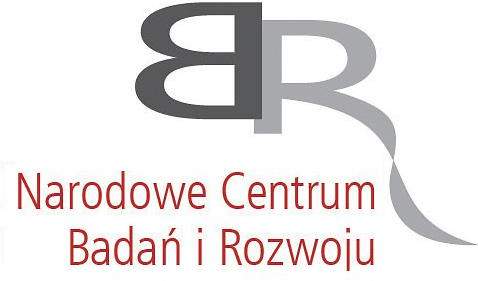| 1. |
Psiuk R., Chrzanowska-Giżyńska J.♦, Denis P., Wyszkowska E.♦, Wiśniewska M.♦, Lipińska M.♦, Wojtiuk E.♦, Kurpaska Ł.♦, Smolik J.♦, Mościcki T. P., Microstructural and properties investigations of tantalum-doped tungsten diboride ceramic coatings via HiPIMS and RF magnetron sputtering,
ARCHIVES OF CIVIL AND MECHANICAL ENGINEERING, ISSN: 1644-9665, DOI: 10.1007/s43452-024-01050-0, Vol.24, No.239, pp.1-16, 2024 Streszczenie:
In this work, tantalum-doped tungsten boride ceramic coatings were deposited from a single sputtering target with the radio frequency (RF) and high-power impulse magnetron sputtering (HiPIMS) methods. Two-inch torus targets were synthesised from pure elements with the spark plasma sintering (SPS) method with a stoichiometric composition of W1-xTaxB2.5 (x = 0, 0.08, 0.16, 0.24). Films were deposited with RF and HiPIMS power suppliers at process temperatures from RT to 600 °C. The substrate heating and the energy of the ionised material impacting the substrate increase the surface diffusivity of adatoms and are crucial in the deposition process. The results of SEM and XRD investigations clearly show that the addition of tantalum also changes the microstructure of the deposited films. The coatings without tantalum possess a finer microstructure than those with 24% of tantalum. The structure of films is homogeneous along the film thickness and composed mainly of columns with a (0001) preferred orientation. Deposited coatings are composed mainly of P6/mmm α-WB2 structures. The analysis of nanoindentation results allowed us to determine that ceramic coatings obtained with the HiPIMS method possess hardness above 41 GPa and a ratio of hardness to reduced Young modulus above 0.1. The thickness of HiPIMS-deposited films is relatively small: only around 60% of the RF magnetron sputtered coatings even when the average power input was two times higher. However, it has been shown that the RF coatings require heating the substrate above 400 °C to obtain a crystalline structure, while the HiPIMS method allows for a reduction of the substrate temperature to 300 °C. Słowa kluczowe:
RF magnetron sputtering, HiPIMS magnetron sputtering, Superhard ceramic coatings, Transition metal borides, Deposition temperature Afiliacje autorów:
| Psiuk R. | - | IPPT PAN | | Chrzanowska-Giżyńska J. | - | inna afiliacja | | Denis P. | - | IPPT PAN | | Wyszkowska E. | - | National Centre for Nuclear Research (PL) | | Wiśniewska M. | - | Łukasiewicz Research Network – Metal Forming Institute (PL) | | Lipińska M. | - | inna afiliacja | | Wojtiuk E. | - | inna afiliacja | | Kurpaska Ł. | - | National Centre for Nuclear Research (PL) | | Smolik J. | - | inna afiliacja | | Mościcki T. P. | - | IPPT PAN |
|  | 140p. |
| 2. |
Wojtiuk E.♦, Radziejewska J., Marczak M.♦, The influence of abrasive finishing conditions on the surface texture of Inconel 939 elements made using the 3D printing LPBF method,
PRZEGLĄD SPAWALNICTWA, ISSN: 0033-2364, DOI: 10.26628/simp.wtr.v96.1180.34-40, Vol.96, pp.34-40, 2024 Streszczenie:
The article presents research on finishing treatment applied to components made of Inconel through 3D printing by Laser Powder Bed Fusion method. Vibration-abrasive machining was carried out using a supporting fluid and various shapes of abrasive. The effects of the processing conditions were analysed based on the surface roughness of the samples and mass loss. The obtained collective results were subjected to comparative analysis with the effects of vibratory-abrasive processing without the use of a processing fluid, as presented in the article. The research has shown that using vibration-abrasive processing, it is possible to reduce the height of surface irregularities by more than three times after four hours of treatment. The intensity of processing was the highest in the first hour of the process. The lowest roughness heights Ra = 1.8 μm were obtained using ceramic balls in the presence of a supporting fluid. Słowa kluczowe:
vibration-abrasive processing, IN939, roughness, additive manufacturing, 3D printing post-processing Afiliacje autorów:
| Wojtiuk E. | - | inna afiliacja | | Radziejewska J. | - | IPPT PAN | | Marczak M. | - | Institute of Cardiology (PL) |
|  |

























